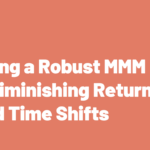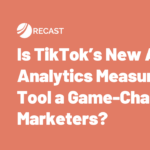If your executive and finance team has become addicted to only looking at the last-touch attribution report in Google Analytics, this can be a real problem.
It’s critical to help them understand the nuances of solid marketing measurement beyond just last-touch reporting.
We’ve seen it too many times:
If the rest of the company doesn’t understand what incrementality is, or why last-touch attribution isn’t actually measuring incrementality, it can be very complicated to introduce other ways of doing measurement – let alone pitch them on the idea of using MMM.
If you’re a marketer in this situation, I’d recommend doing your best to educate those key stakeholders on how marketing measurement actually works and why incrementality is so important.
Educate Stakeholders on Marketing Measurement
The tricky part is explaining that ROAS numbers in ad platforms and last-touch attribution numbers aren’t necessarily measuring incrementality.
I’ve found that a good way to start explaining these concepts is by walking them through the idea of branded search not being fully incremental. The idea is that if someone is searching for your brand already, it’s less likely that clicking on a branded search ad was what actually caused them to convert.
You can use this example as an intuitive gateway to help them think about running experiments to validate channels, and how MMM might fit into the picture to understand what our marketing is actually doing.
Branded Search as a Gateway to Incrementality
Incrementality should be the north star for every marketer – and for your finance team.
If you can convey that incrementality is about causality – the main thing we care about as marketers– and that these other metrics might not capture it, then you’ve laid the groundwork. And that’s when you introduce the idea of running experiments and potentially introduce the idea of building a media mix model.
If you’re doing MMM, we highly recommend that the finance team is introduced to the different assumptions that are being made and the forecasting capabilities, and they need to understand the uncertainty that comes out of the model.
They don’t need to understand the internals of data science and statistics, but they do need to understand how they are going to use this for the budgets that they’re building for next year.
Building the Foundation for MMM Adoption
What we don’t recommend is coming in hot to a meeting with new results that invalidate everything that has been done before: that will be too much too quickly.
We see this a lot, especially in businesses that started out in e-commerce and have grown to become more complicated. In those cases, the leadership team was trained, often by marketers, to look at GA or their BI tool for a last-touch attribution number to measure the effectiveness of their marketing spend.
The problem is that these other methods –experimentation, incrementality, MMM– aren’t going to match what they’ve been looking at in the past — in large part because they were wrong both in terms of what they were measuring and of what the business should care about.
And that can be shocking to a leadership team that isn’t prepared for it. No one wants to hear that they might have been wasting money and that there’s actually a lot more uncertainty in how their business works than they thought before.
Instead, take the exec team on a journey toward incrementality. Show them the new methods you want to try, why they’re better, how they’re different, what you expect to happen, and what the process will look like. It won’t be as much of a shock to them, and they’re more likely to be open to it.
Change management is definitely one of the hurdles to successfully rolling out MMM and incrementality, but it’s solvable.
Overcoming Change Management Challenges
Marketers who work for executive teams that understand incrementality are in a very privileged position.
If that’s not you, helping them understand what incrementality means and why it matters can unlock the way they think about marketing and its impact. At the end of the day, executives want to make data-driven decisions. If you guide them through these concepts and present ways to measure incrementality and optimize the marketing budget, most of them will get it and support it.



